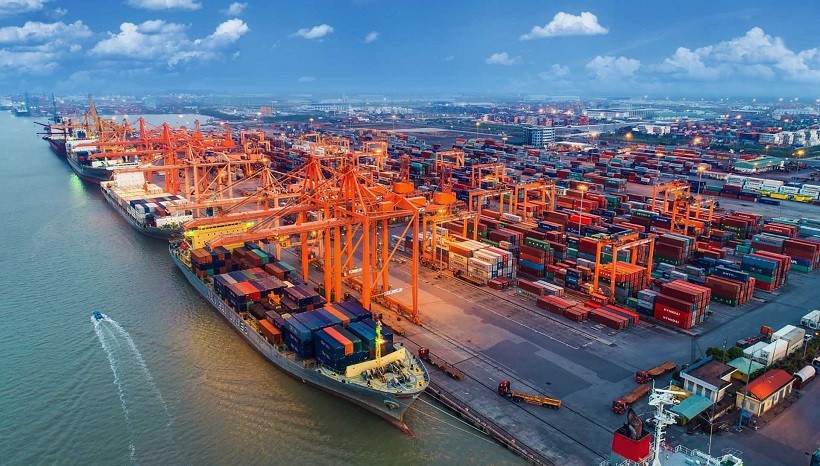
USABC senior representative: FTAs are not everything, self-reliance will help Vietnam’s economy flourish
Latest
That is the remark by Ms. Bui Kim Thuy, Senior Representative of the US-ASEAN Business Council in Vietnam (USABC) cum Member of the HARVARD-Asia Pacific Advisory Council in an interview with The World and Vietnam Report.
As international trade grows, trade remedies surge
With many FTAs signed and implemented, the surge of trade remedies in many countries and export market areas is what Vietnamese businesses will have to face. According to the Ministry of Industry and Trade, every two weeks, Vietnam has to deal with a trade remedy case. What do you think about this situation?
 |
| Ms. Bui Kim Thuy, Senior Representative of the US-ASEAN Business Council in Vietnam (USABC) cum Member of the HARVARD-Asia Pacific Advisory Council. (Photo: NCCC) |
In my view, this situation is normal in international trade. Trade remedies are one of the inevitable measures and are allowed as per the relevant regulations of the World Trade Organization (WTO). FTAs are not everything, self-reliance will help Vietnam’s economy flourish.
Economies are permitted to use trade remedies in a manner consistent with WTO regulations to protect their domestic industry and agriculture and people.
When participating in the global market, global enterprises in general and Vietnamese ones in particular must accept trade remedies.
Besides, along with the growth and development of international trade, the prevalence of trade remedies is inevitable. As international trade grows, trade remedies surge.
Vietnam has innumerable FTAs. In my opinion, in the world, there are very few countries with rich and diverse FTAs that cover almost the main and key economies, like Vietnam. Vietnam is also the only developing economy in the world with such a diverse and rich FTA network.
In ASEAN, Vietnam ranks second only to Singapore in terms of the number of FTAs. But Vietnam’s FTAs are very substantive because Vietnam is a comprehensive and buoyant economy. In terms of scale, Vietnam’s economy may not be large, but it has the most varied industries. Therefore, Vietnam has been reaping countless “fruits” when it has a diverse FTA network.
Thus, with this huge number of FTAs and such a remarkable growth in import and export turnover, it is anticipated that Vietnamese enterprises have to confront mounting trade remedies cases.
In the coming time, in order to assist enterprises to respond to investigation cases applying trade remedy measures, which solutions do you think need to be strongly promoted?
Recently, the Trade Remedies Authority of Vietnam (Ministry of Industry and Trade) has been successfully carrying out trade remedy solutions to support and accompany the business community doing business, production and investment in Vietnam.
A typical example is that the Ministry of Industry and Trade, the Ministry of Agriculture and Rural Development and Vietnamese diplomatic missions in the United States have successfully dealt with the US’s imposition of anti-dumping duties on honey exported from Vietnam.
At first, the US tax rate was very high, at nearly 500%. With evidence and reasonable arguments proving that Vietnam does not implement dumping or subsidize honey exporting enterprises, the US side has cut the tax rate to 58.74% - 61.27%.
It can be affirmed that the websites on trade remedies that the Ministry of Industry and Trade have built are very handy. We have used a great deal of information from these websites to provide USABC partners. USABC, I and the business community highly appreciate the information system of the Ministry of Industry and Trade.
In the digital age, these metrics play an essential role for businesses. The Ministry of Industry and Trade and the Vietnam Customs Agency have specifically and meticulously monitored enterprises’ export and import activities and warned them of the risks of being sued regarding trade remedies.
At the same time, representative agencies in foreign countries have performed their role well when regularly updating information related to trade remedies in the local markets. Therefore, Vietnamese enterprises have timely and appropriate preparations to meet the investigation needs of foreign partners.
In order to support businesses to avoid risks from trade remedies, as far as I’m concerned, there must be cooperation between associations and industries in making business strategies for the industries.
In addition, it is necessary to have a pricing strategy for each product group so that businesses do not feel “lonely” when engaging in foreign markets and feel the protection and support from industry associations apart from the regulatory agency.
In addition, about 95% of Vietnamese businesses are micro, small and medium ones. This business sector does not have many resources and often does not have good legal staff to update information on trade remedies accurately and in a timely manner.
Therefore, in the future, the government and related agencies need to provide training courses on trade remedies for micro, small and medium enterprises. This support needs to be tailor-made; in particular, the government and related agencies should provide meticulous, practical, and specific guidance for manufacturing enterprises in each industry and each locality.
In particular, it is important to focus on the group of enterprises whose export turnover of goods to foreign countries is similar to the goods exported from neighboring countries to Vietnam.
 |
| There are more and more Vietnamese businesses that are strong and have sufficient motivation, talent, and capacity to integrate into the world. (Source: NVCC) |
FTAs are not everything
In your opinion, what opportunities do Vietnamese businesses have with FTAs?
FTAs bring about a lot of opportunities for Vietnamese businesses. As mentioned above, Vietnam is the only developing economy in the world that boasts such a huge number of FTAs (including new generation FTAs) and has so many diverse FTAs in various markets.
Vietnamese enterprises have benefited a lot through tax reduction (some taxes have even been reduced to 0%).
Currently, Vietnam owns 3 new generation FTAs, which are the Comprehensive and Progressive Agreement for Trans-Pacific Partnership (CPTPP), the EU-Vietnam Free Trade Agreement (EVFTA) and the Vietnam - UK Free Trade Agreement (UKVFTA). These FTAs aim at fair trade and sustainable development.
The diverse, high-quality FTA network acts as a “highway” that helps Vietnam to integrate with the world faster. However, it is the people and businesses who decide on the vehicles, as well as the fuel and energy.
In the first 6 months of 2022, Vietnam’s export turnover continued to increase, with a trade surplus of more than 700 million USD. This result is partly due to the existing FTAs. How do you evaluate this number?
As you say, the above results are partly due to FTAs, but not enough. In my opinion, the above super impressive results are triggered by three reasons.
First, it is the great efforts of Vietnamese enterprises. There are more and more businesses that are strong and have sufficient motivation, talent, and capacity to integrate into the world. Currently, there are numerous agricultural enterprises that have made their mark on the world market.
There are even groups of goods such as leather and footwear, textiles, pepper, cashew nuts, coffee, furniture, etc. that are symbolic of Vietnam. In the US market, Vietnam is second only to China in terms of textile and footwear exports.
Second, there is the increase and expansion of investment and production in Vietnam by enterprises with foreign direct investment (FDI).
For example, in the first 6 months of the year, up to 67-71% of the impressive export level came from the group of FDI enterprises, especially high-quality FDI enterprises.
Third, it is the new generation of FTAs.
However, it is undeniable that, above all the aforementioned reasons, it is our own efforts. Vietnam has made efforts to reform administrative procedures, trying to cut unnecessary and cumbersome procedures. The business community recognizes and appreciates the Government’s endeavors during and after the COVID-19 pandemic.
Recently, the world has considered Vietnam as a politically stable and peaceful country with coherent policies. This causes international businesses to commit to long-term investment in Vietnam and Vietnamese enterprises feel secure, thereby creating a trade surplus and such an impressive export surplus.
How will FTAs help Vietnam’s economy recover and prosper in 2022 and beyond?
In spite of making considerable contributions to the development of businesses and the economy, FTAs are not everything. In my viewpoint, the attempts of the Government, people and businesses, including efforts to effectively implement the FTAs, will actually help the economy revive and thrive.
The most obvious “tangible” results of FTAs are tax cuts and the fact that goods meet rules of origin. However, if the implementation at each customs clearance point is not synchronized, enterprises will not gain benefits. Therefore, reducing administrative procedures and substantively facilitating trade are crucial for Vietnam’s economy to take off.
So, in your opinion, in order to facilitate trade, what is the most important issue?
In general, Vietnam faces a great ocean, leans its back on the world’s largest continent and has an extremely important geopolitical and geo-economic position in ASEAN. Thus, we need to take advantage of this in the next decade, otherwise, it is very wasteful.
With this position, Vietnam could become the logistics center of the region, but to do so, it must have appropriate policies, especially import-export and customs ones.
In the near future, Vietnam is advised to improve the connectivity between central and local levels, between ministries and sectors, etc. to avoid the disruption of the “supply chain” in terms of documents.
What’s more, Vietnam ought to have a substantive trade facilitation policy, especially from the customs authority, so that there can be breakthroughs and rapid progress.




















